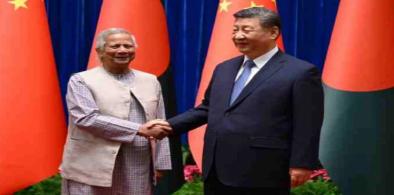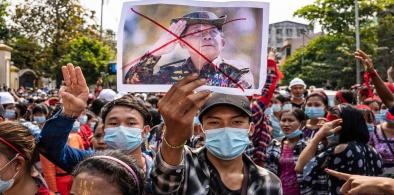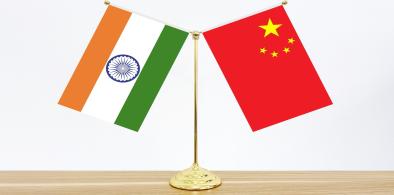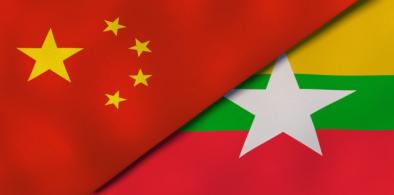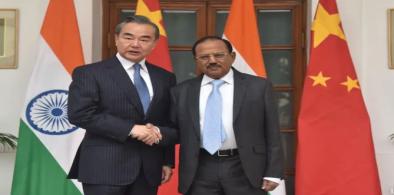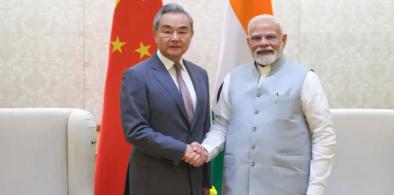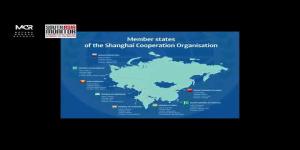India's increased naval exercises, combined with its Indo-Pacific ambitions and Western partnerships, indicate a shift from coastal defense to regional management. For smaller coastal states, such patterns can readily translate into worry, not from an impending threat, but from an inferred sense of power. When a major power operates near contested or shared spaces, the neighbors are obligated to interpret purpose through action.

Is A India–China War Possible? A Fragile Peace Will More Likely Hold
While low-level clashes may continue, the possibility of a large-scale conflict, as projected by recent U.S. intelligence reports, remains far-fetched. Both countries are acutely aware that they stand to lose far more than they can gain. Despite uneasy relations, several factors actively discourage conflict
China's Reactions To Terror Incidents: State And Social Media Echo Clear Bias For Pakistan
The two incidents in India and Pakistan over the course of a week have shown that the coverage of terrorism by the Chinese media ecosystem largely reinforces the state’s foreign policy narratives and preferences for alignment in South Asia. Pakistan emerges as a clear preference for the public, which is reinforced by commentators and opinion makers on non-state news media platforms.
China’s CPEC Extension To Afghanistan Has Security Implications For Region
CPEC 2.0 is expected to serve as a major leverage tool for China to access Afghanistan’s untapped natural resources and enhance connectivity to Pakistan and Central Asia. However, for Afghanistan, the initiative may be more of a challenge than an opportunity. Countries such as Sri Lanka and the Maldives have already faced severe economic consequences from poorly structured Chinese-funded projects.
China's New Great Game: How Beijing is Redrawing South Asian Geopolitics
China's rise has, in the consensus view of most international relations scholars, fundamentally changed South Asia. The old, India-centric region is gone. Pakistan has tied its future to Beijing, seeing China as its ultimate guarantor. Bangladesh has played a smart game, using Chinese money for national development while maintaining its "friendship-to-all" foreign policy. The Teesta project shows Dhaka's new confidence in following its own national interest. For India, the challenge is immense, as it must now compete for influence in its own backyard.
US-Russia-China Dynamics And A Changing Global Order
Xi Jinping's focus remains on projecting steady-handed leadership, reinforcing that China does not seek to replace the US but demands recognition of its legitimate sphere of influence. The Chinese approach is less about the symbolism of meetings and more about playing a long game, similar to the ancient strategy of Go (Weiqi): patient, adaptive, and quietly expansionist.
50 Years Of Bangladesh-China Ties: Trade, Infrastructure Investment Underpin The Relationship
China has become Bangladesh’s top development partner, providing the capital and engineering expertise. It provided funding and construction for the $4.63 billion Padma Bridge Rail Link. This project connects the underdeveloped south to the capital. China also built the $2.48 billion Payra Thermal Power Plant, a critical piece of energy infrastructure. It constructed the Bangabandhu Tunnel under the Karnaphuli River in Chittagong, the first of its kind in South Asia.
Indo-Pacific: Peace, Power, And India’s strategic balance
The Indo-Pacific has indeed been relatively more stable compared to many other geopolitically contested regions. The QUAD plays a role in deterrence and in norm setting, but its impact is partial. India, through its constellation of policies—Act East, SAGAR, IPOI, MAHASAGAR, etc.—contributes significantly to that peace
Myanmar: Bitter Contest For Influence In Indo-Pacific’s Most Volatile Frontier
The convergence of instability in Myanmar, fragility in Bangladesh, and external meddling by China and Pakistan threatens to form a volatile arc along India’s eastern flank. The challenge for New Delhi is not to pick sides in Myanmar’s internal war but to manage outcomes—to stay present, relevant, and nimble while others overreach. Because when the last ballot is counted, Myanmar will likely look the same: weary, divided, and ruled by men who mistake fear for order. The generals will call it normalcy; the world will call it tragedy.
China’s Rapid Rise Is Slowing Down: Xi’s Ability To Project Influence May Be Diminishing
As China continues to invest beyond what its economy can absorb, unproductive spending—much of it debt-financed—has expanded far faster than GDP. A decade ago, total debt was about twice the size of the economy; now it is roughly triple. The debt-to-GDP ratio has reached around 300 percent, alarmingly high for a developing economy.
The Dragon’s Blueprint: Institutional Lessons from China's Rise
While China’s model may not be directly replicable in a democratic setup like India, the emphasis it places on institutional adaptability, long-term strategic planning, and coordinated governance holds enduring relevance. India’s path will be different—but learning from China’s successes and failures can help shape a more inclusive, resilient, and forward-looking developmental trajectory.
Dealing With China: Negotiation, Deterrence And Strategic Choices for India
Open war with India is not in China’s interest. It would jeopardize its Belt and Road Initiative, alienate global markets, and push India closer to the United States and other like-minded partners. Moreover, the Himalayan terrain offers no guarantee of quick victory. Still, China might employ limited conflicts or sudden skirmishes to test India’s resolve, create psychological pressure, or distract from internal challenges.
China’s Endorsement of Myanmar Rebranding Will Widen Regional Geopolitical Faultlines
China’s Myanmar policy highlights a core strategic contradiction. While Beijing positions itself as a champion of peace, development, and regional connectivity, yet its explicit support for the military regime entrenches coercive rule to safeguard its strategic and economic interests.
China's Grand Military Parade: A New Balance of Power on Display in Beijing
Strategically, the display went beyond the immediate region. The unveiling of long-range nuclear platforms and hypersonic missiles positioned China as a peer competitor to the United States in global deterrence. No longer confined to regional defense, the People’s Liberation Army (PLA) signaled its readiness to project power across continents.
Tianjin and After: A Pragmatic India-China Playbook to Turn SCO Outcomes into Indian Jobs
The debate in Delhi will inevitably ask whether engagement through the SCO dilutes India’s other partnerships or rewards China without resolving the frontier. That binary misses the point. The right question is: can we turn multilateral statements into Indian payrolls while holding our security lines? The answer is yes, if we focus on execution.
As Beijing Reshapes Regional Dynamics, India Needs to Recalibrate China Strategy
While Wang Yi’s India visit and PM Modi’s upcoming China visit may signal a degree of creeping normalcy at the bilateral level, Beijing’s expanding footprint in South Asia is set to intensify regional competition, requiring careful assessment of its implications for the overall India-China relationship
Asia's Balance of Power Depends on India's Ability to Face China’s Strategic Challenge
Over the past decade, India’s strategic landscape has grown increasingly complex. Beijing has not diluted its consistent strategy of constraining India. Whether through deepening ties with Pakistan, or expanding influence in India’s periphery, China’s approach remains adversarial. Beijing’s assertive regional posture underscores the urgency for India to rethink both its economic and security policies.
Myanmar's Collapse Will Have Consequences Far Beyond Asia
What began with a coup in 2021 has devolved into a theater for China’s energy security, India’s border anxieties, Russia’s arms sales, and America’s China strategy. Each external actor pursues its narrow interests; none has the incentive to restore genuine stability. The losers, inevitably, are Myanmar’s people.
The Tibetan Buddhist Reincarnation System and China's Political Weaponization
Chinese emperors, especially those of the Manchu-led Qing Dynasty, recognized that control over Tibetan Buddhism offered a powerful form of soft power. By leveraging religious authority, they could exert indirect political influence over Buddhist populations beyond China's borders.







